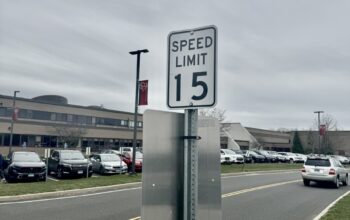
Infographic by Victoria Worcester
Victoria Worcester, Reporter
@vworc_courant
It seems like this year, fewer and fewer members of the senior class are posting Facebook statuses about where they are attending college. Several seniors have noted that they have noticed an increase in denials and deferrals for the class of 2020. Professionals seem to have several different opinions regarding why this is occurring. NCHS guidance counselors and College and Career Center administration have been able to discuss their viewpoints.
It has come to school professionals’ attention that students have been applying to more early action schools than ever before. “In October a representative from Boston College visited,” Susan Carroll, Coordinator of the College and Career Center, said. “About 20 kids stayed behind to ask some questions. They asked if they have a better chance of applying regular or early action. She says it depends on your grades and SATs.”
Ms. Carroll continued, “Then she started to ask how many early action schools they were applying to. She was floored when kids said 15-20 schools. She said that’s ridiculous and that’s not the purpose of early action. I’ve seen more than ever before. It used to be at the most apply to three early actions.”
According to the National Association for College Admission Counseling (NACAC), their annual State of College Admissions (SOCA) report showed that more students are applying to more and more schools, which makes the early action, early decision, and regular decision pool more competitive. In the year 2013, “32% of fall 2013 applicants submitted seven or more college applications, an increase of 10 percentage points since 2008.”
Another trend of 2015 college admissions is that, “As the number of high school graduates in the US plateaus, colleges are shifting their focus from high school seniors to international students and transfers (“2015 College Trends Families Need To Know”).
The skyrocketing number of early action applicants this year could possibly be related to greater awareness of financial aid opportunities. “The dissemination of information about financial aid.” I always encourage students to apply to college even if they think they can’t pay for it because often things money is out there, and often a college will provide money,” guidance counselor Ann Vernon said.
In addition to a larger pool of applicants, colleges are starting to change their profile of who they want to attend their school. “In 2005, Dartmouth decided that they were going to accept more underrepresented students than ever before” Ms. Carroll said. They filled their class with 70% of underrepresented students. Perhaps suburban white students didn’t fit in their college profile. It depends on the type of application the student is presenting.”
Ms. Vernon agreed. She said, “It’s unusual that Dartmouth didn’t accept any early decision from New Canaan this year. However, it could be because of Dartmouth changing their student profile.”
Even though most early decision and most early action months are coming to an end, there is still the regular decision pool in the springtime. It will be interesting to see what happens when regular decision applicants start to hear back. We’ll just have to keep checking Facebook to find out!



